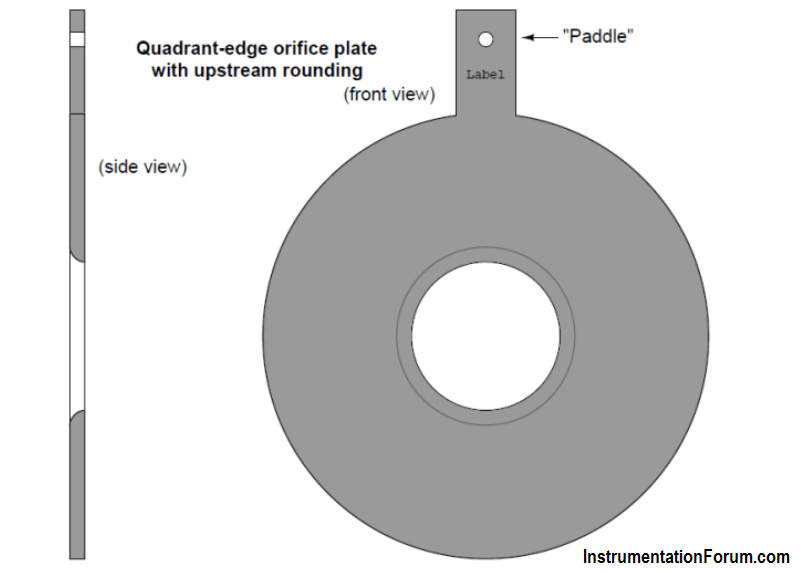Quadrant Edge Orifice Plate
-
This orifice plates employ non-square-edged holes for the purpose of improving performance at low Reynolds number values, where the effects of fluid viscosity are more apparent.
-
It employs rounded- or conical-entrance holes in an effort to minimize the effects of fluid viscosity.
-
Experiments have shown that decreased Reynolds number in a venturi-type flow element causes an increase in differential pressure due to the effects of friction against the entrance cone walls.
-
By manufacturing an orifice plate in such a way that the hole exhibits “venturilike” properties (i.e. a dull edge where the fast-moving fluid stream has more contact with the plate), these two effects tend to cancel each other, resulting in an orifice plate that maintains consistent accuracy at lower flow rates and/or higher viscosities than the simple square-edged orifice.
Application:
Used for high viscous fluids such as heavy crude, syrups and slurries. It is always recommended for flow where Reynolds number is less than 10,000.
